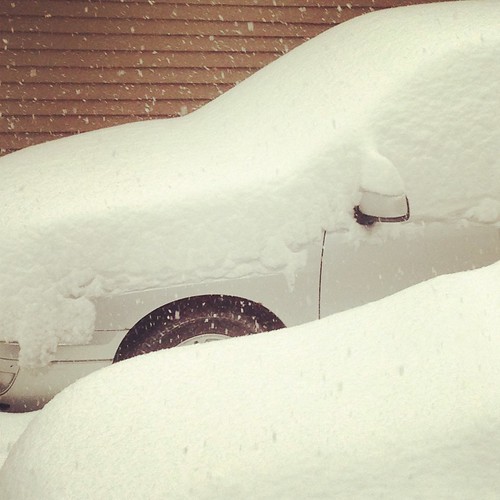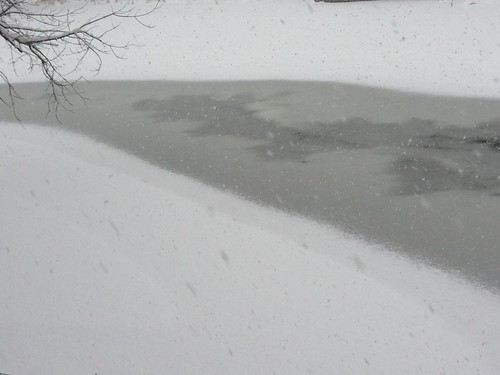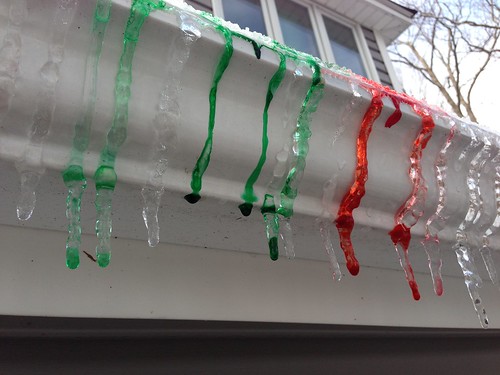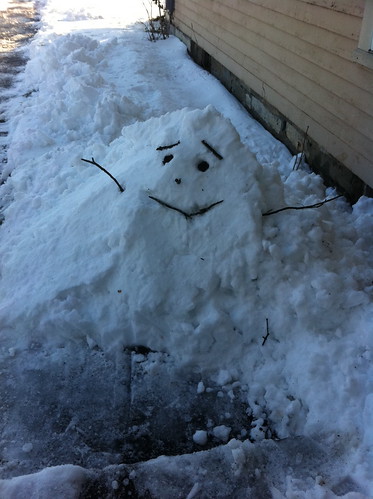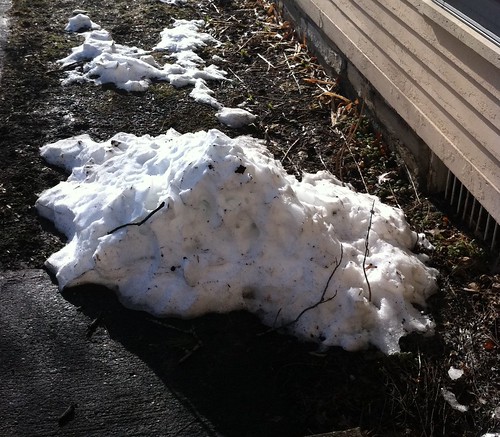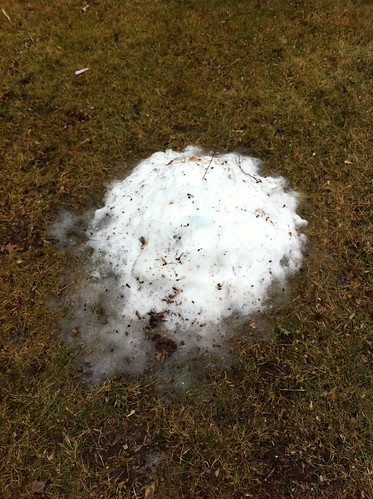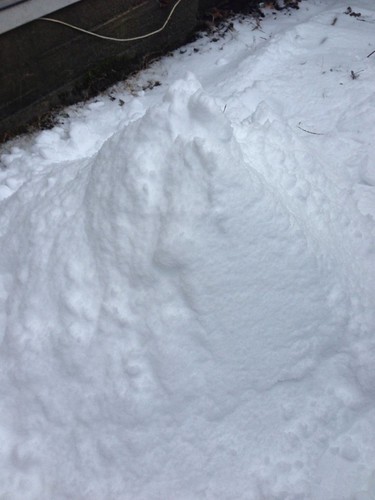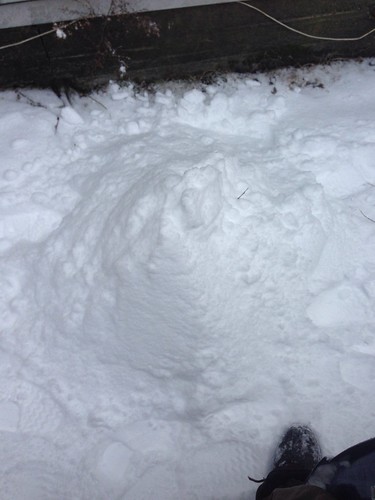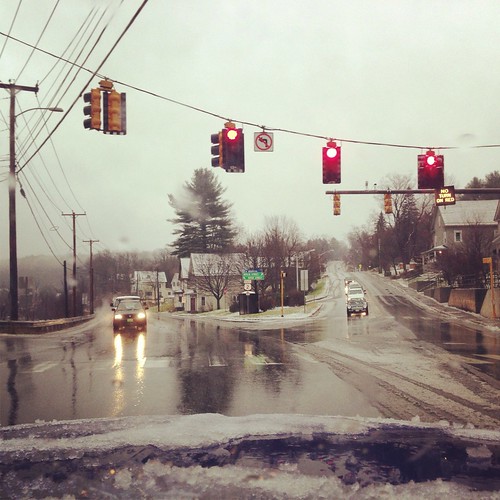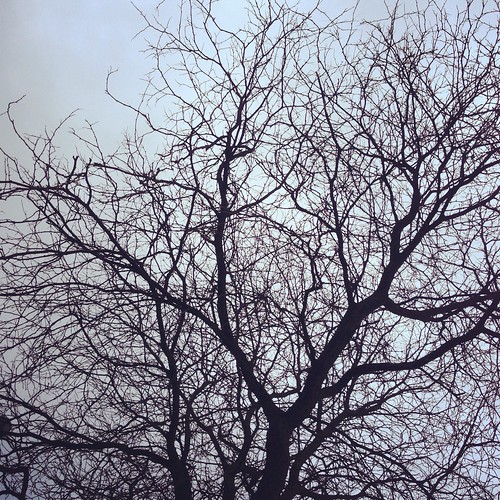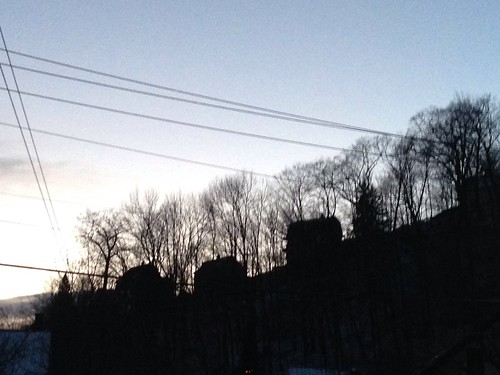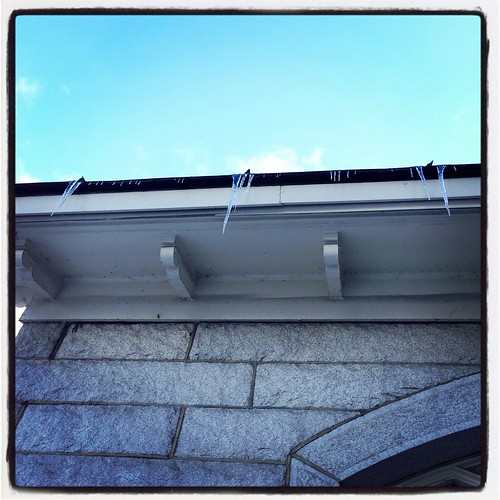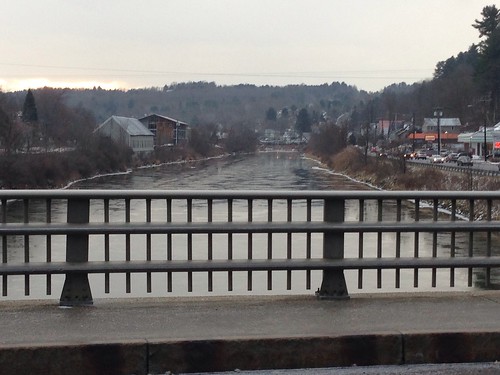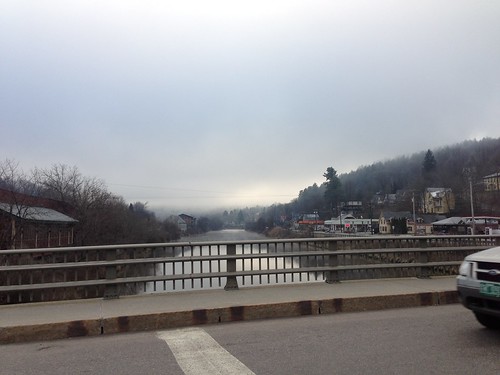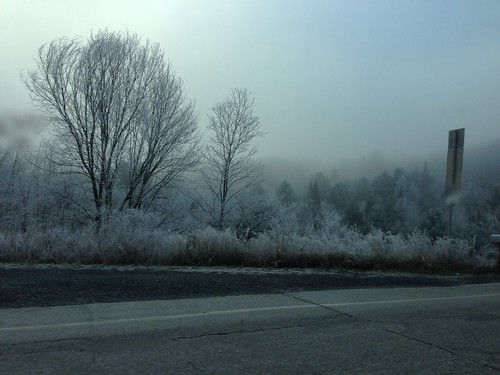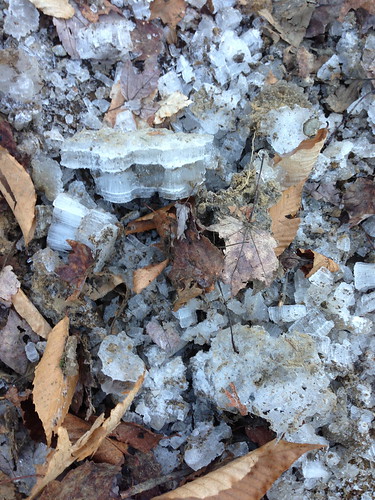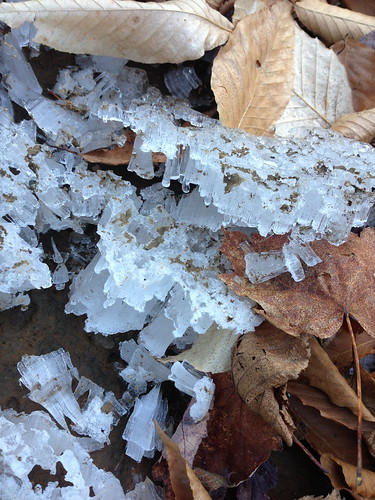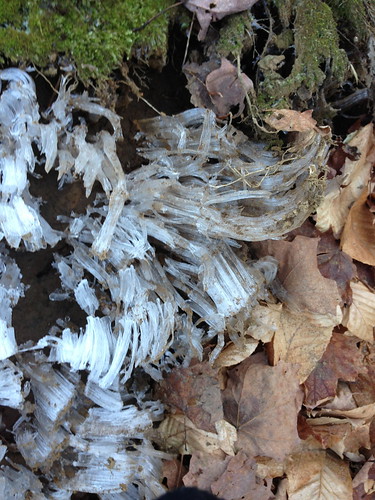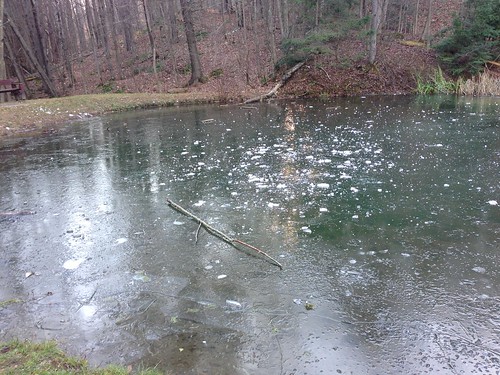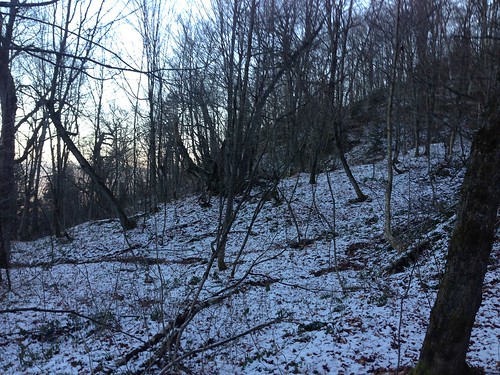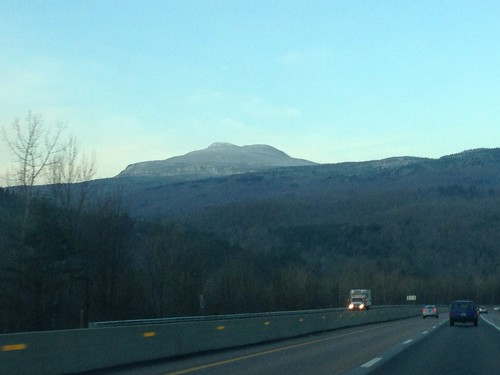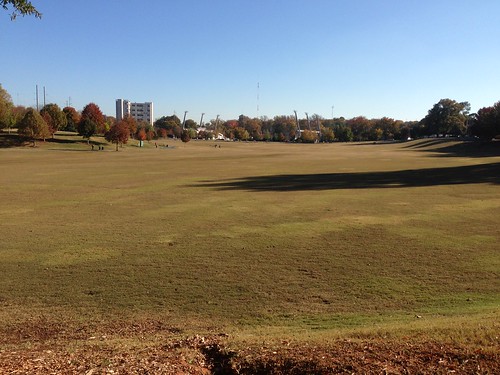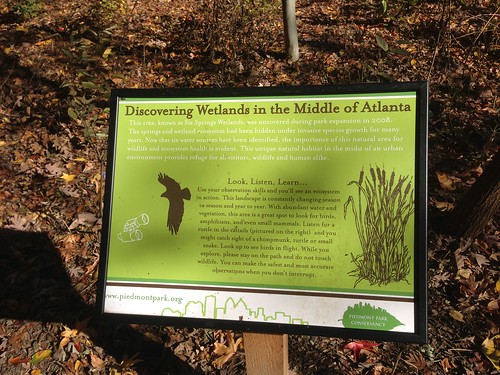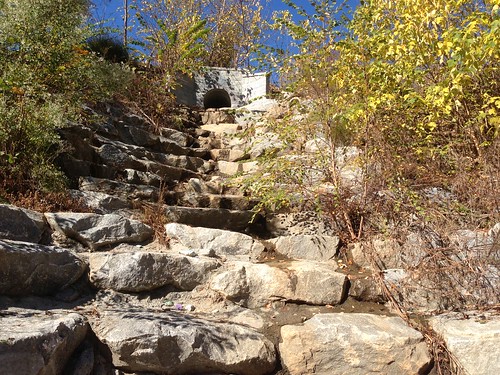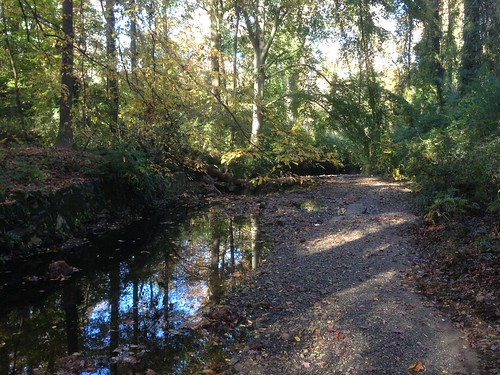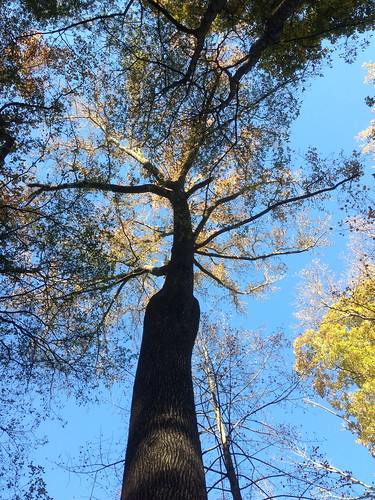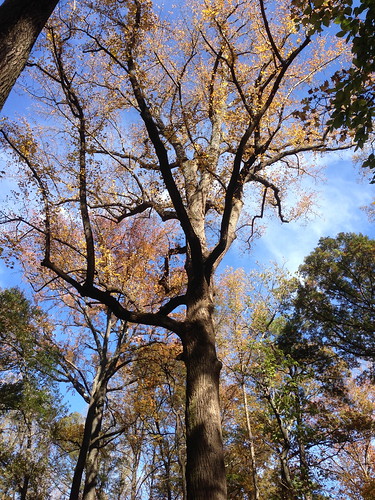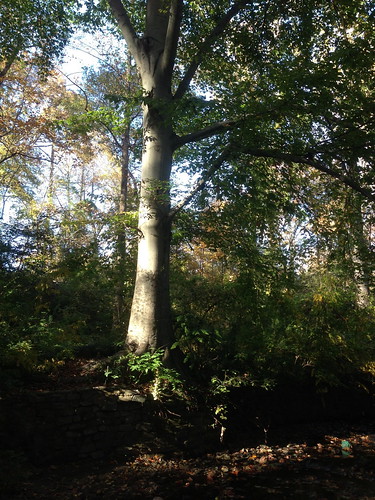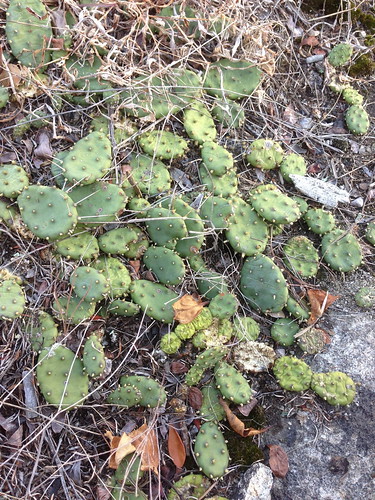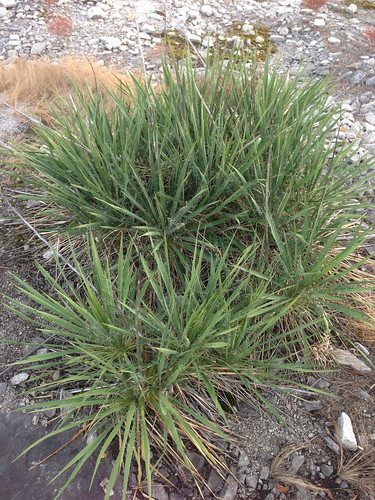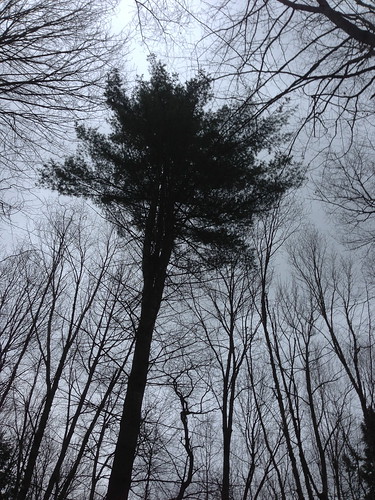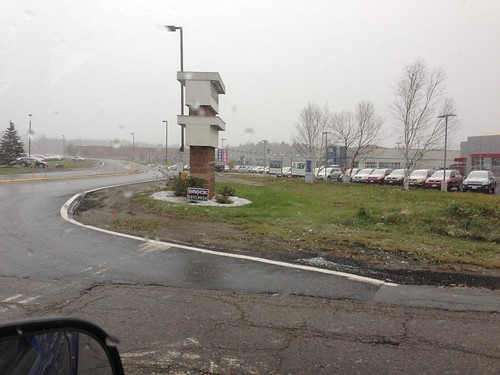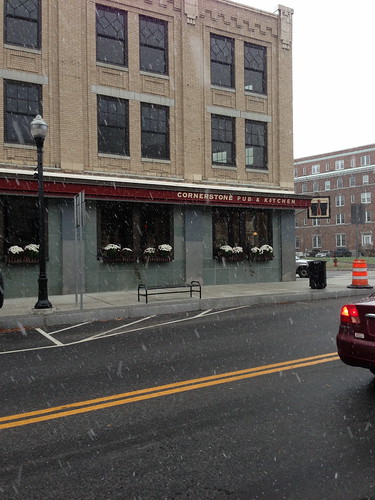Until three and a half years ago, I had pretty much always lived in coastal California. Sure, I went to the mountains often, and had many a fun snowboarding or sledding day, but I'd never *lived* somewhere really cold. Visiting the snow for a weekend is a very different thing from living in a place where it often gets below zero in the winter!
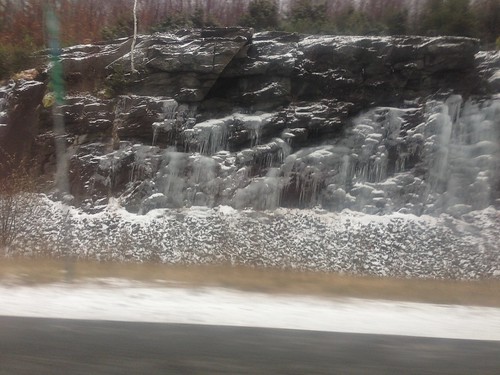
This year's winter has come on in fits and starts. November was slightly colder than average, but included many beautiful sunny days and starry cold nights, rather than the typical cold rain, wet snow, and wintry mix. The last few days of November were very cold, with one night down in the single digits. Now that it is December, we're back to above average temperatures, unfortunately, and have had several rainstorms mixing with puny snow flurries. The trend is expected to continue for the next seven days, with just about every possible type of precipitation in the forecast at some point.
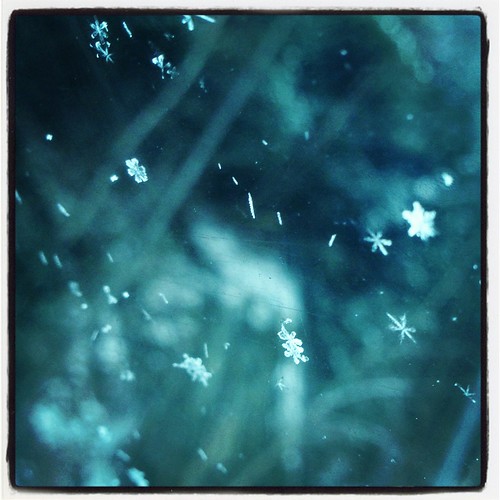
Last week, when it got down to single digits, I learned something they never told me when I moved to Vermont... but somehow it had never came up before. My truck started up in the morning, reluctantly, but seemed ready to go. Except... it wouldn't GO. It dragged itself out of the driveway reluctantly, and i soon realized that one of my rear tires would not spin and was DRAGGING through the ice.
It turned out my parking brake was frozen shut. The day before, we'd gotten wet snow and then a deep freeze. Water got into the brakes and frozen them!
I was able to get the parking brake unstuck, but not before learning that most people in Vermont don't use the parking brake unless on a steep hill. No one told me this!
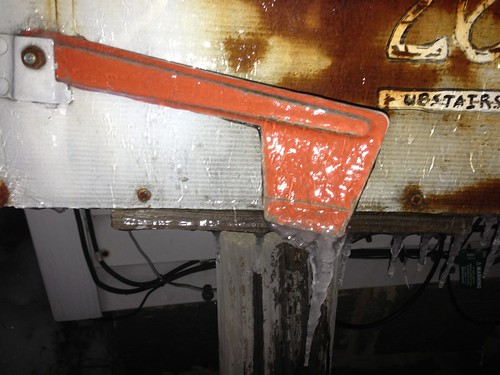
Apparently this mailbox in Montpelier was also frozen.
Anyway, here are a few more things I have learned, often 'the hard way', going into my fourth winter in Vermont
-A two wheel drive truck is the WORST thing to drive in the snow. 4*4 trucks are good but it helps to throw some tubes of sand in the bed to weight down the back. Don't expect the car to stop quickly (or at all) in the ice.
-People drive two speeds on the Interstate in a snowstorm: way too fast and way too slow. If you are behind the 'way too slow' car and try to pass, there is probably a big pile of snow between the lanes, so be ready to bust over it.
-The first few minutes the snow starts 'sticking'on the road are often the worst. When the road is totally covered in snow... it is somewhat slick, but not the skating rink of those first few minutes...
-Often the back roads are much safer for winter storms, as long as you don't choose the steep or twisty ones. But don't try it if you don't know the roads. Gravel roads can be a good bet during snowstorms.
-During 'mud season' which comes as the snow and ground thaw (who knew the ground could freeze?!) , the gravel roads are to be avoided at all costs.
-If the snow is really howling, forget going where you were supposed to go, if it's not an emergency. Walk to town and get a beer or coffee instead. Most plans can wait, and snow is beautiful to walk in but less so to drive in.
-The roads also get huge bumps on them called 'frost heaves' caused by water freezing under the road.
-Windshield washer fluid - the kind good down to -20 or colder -is essential for driving in winter. I once drove into the Sierra in California with the type that will readily freeze. Bad idea.
-'Wintry mix' is not an ice cream flavor and isn't as fun as it sounds. Though I still think it is interesting.
-There really are a million types of snow.
-Snow makes anything look cute.
*10F, calm, and sunny feels about 20 degrees warmer than 35F, windy, and rainy. Just don't let your skin touch the air.
-It's possible for your nose hairs to freeze.
-You will track salt everywhere inside and it's a pain to clean. You should always take off your shoes when you enter someone's house unless told otherwise.
-A big enough bonfire can keep you warm even at 5 degrees but if you keep your snow jacket on you won't feel the heat and it will melt. Likewise, a house kept at 58 degrees with a warmer wood stove to stand by can seem warmer than a house kept at 68 degrees with no warmer place to stand. I wish we had a wood stove!
-if you go for a nighttime walk on a frigid night with a beer, it will turn into a beer slurpie right in your hand.
-City snow is gross. The piles collect garbage and dog poop and when it thaws it all comes out.
-If you're not in gross city snow, and are in good physical shape shoveling snow can actually be fun. It's my favorite chore because I get to play in the snow and be outside. But it is NOT fun at 6 AM if your car is plowed in.
-Many people who grew up here both love and hate the snow in the same way I both love and hate the hot sunny days in California. Beautiful for having fun, but a nuisance for those doing physical labor outside. 55 degrees and overcast is the best conditions to work outside except for chopping wood the low 40s is great, it gets you in the mood for burning it.
-Snow actually squeaks when you walk on it, when it is really cold. The wind also sounds different... it really howls through the branches and wires, and when the branches hit each other they 'clack' together in a really weird and eerie way.
-Vermont on a subzero night is oddly like the desert. The air is so dry it hurts to breathe it, there are little grainy things flying everywhere, liquid water is nowhere to be found, the color green is largely absent, the quality of sound and distance are warped, and there is a stark, indescribable beauty to the air. I've never been to the cold desert in a blizzard but I bet it is amazing.
I'm sure I will think of a ton more, and maybe those who grew up in the cold have more ideas. Please share them here!

